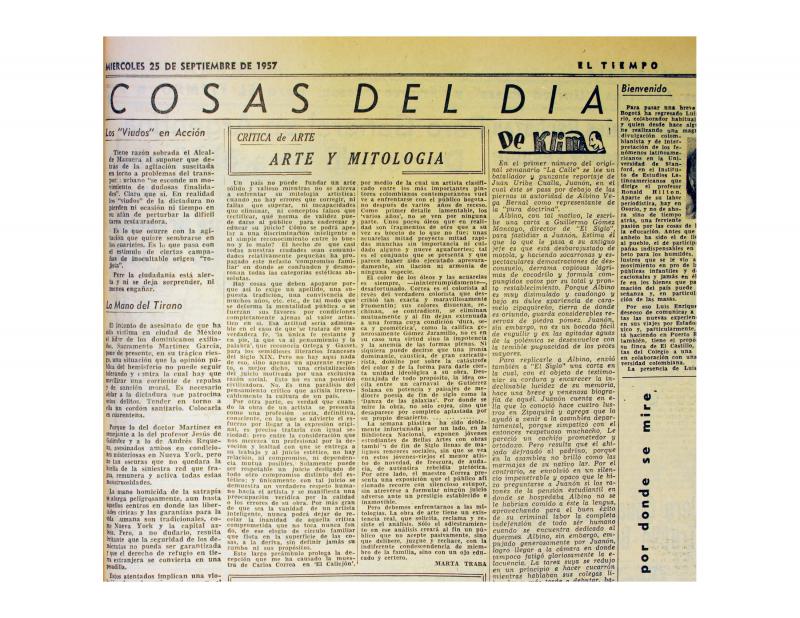In the article “Arte y realidad,” Argentine art critic and historian Marta Traba (1923–1983), who lived in Bogotá for a time, argues for the need to produce knowledge of art, and to support it as an autonomous discipline; she opposes aesthetic language to the narrative codes of nature and reality. Later, this line of thought would appear in a set of arguments that formed the basis for a formalist criticism in which Traba praised a group of artists whose work furthered an internationalist conception of art ostensibly opposed to the nationalist legacy of Mexican muralism. Traba arrived in Colombia in September of 1954, and this article is one of a set of writings published in 1956 and 1957 in the newspaper Intermedio. In these articles, Traba discusses problems related to a specific artist, work, or exhibition, and also the theoretical concepts that formed the basis for her thinking during the second half of the fifties. Crucial to these texts as a whole is Traba’s insistence on the autonomy of the visual arts, and the need to separate artistic production and criticism from other disciplines and discourses. Traba asks artists and critics to consider strictly visual elements as the essential means and ends of works of art and the aesthetic judgments that determine those works. Intermedio, where this article was published, was the name given to the Colombian newspaper El Tiempo from August 1955 to May 1957, at the time it was closed down by a censorship order issued by then dictator General Gustavo Rojas Pinilla (1900–1975). Other articles by Traba published in Intermedio include:“Historias de islas”, (see doc. no. 855005), “El genio anti-servil” (doc. no. 1052760), “Arte y mitología” (doc. no. 1052787), and “Naturaleza: vocabulario de la realidad artística” (doc. no. 858558).




